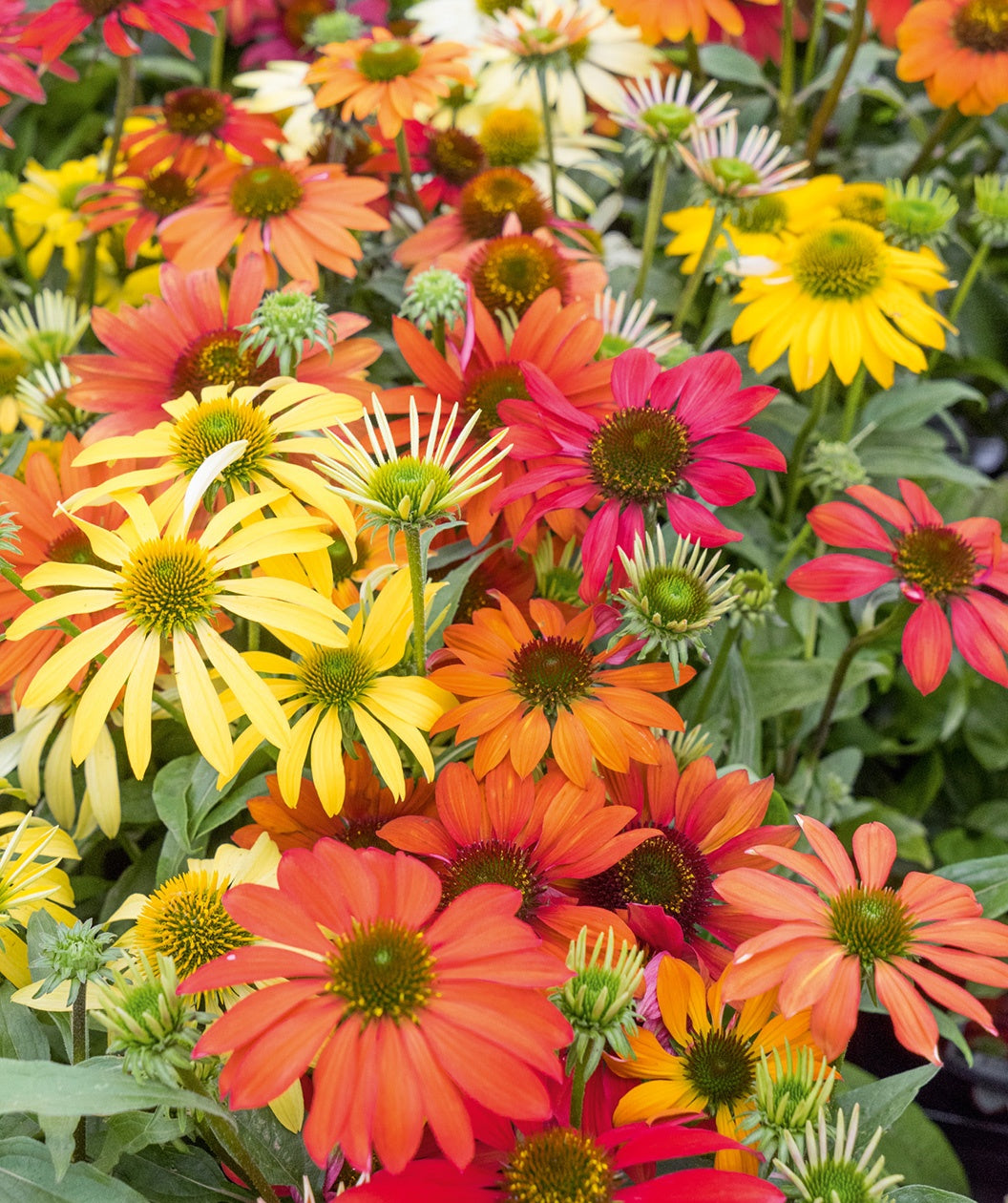

SUMMERTIME BLOOMS IN A GLORIOUS MIX OF COLORS
FEATURES:
- Hues of red, orange, yellows pink, white and more explode on tall stems through summer
- Color array of blooms attract butterflies and other pollinators
- Dried seed heads offer winter interest and feed finches and other birds
- Wonderful border perennial, cut flower option or planted by your patio to enjoy all summer long
- Hand Selected, Fresh from the Grower
- Ships in a plant-safe designed box
Growth Facts
- Hardiness Zone: 4-9
- Mature Height: 1-3' tall
- Mature Width: 1-2' wide
- Exposure: Full Sun/Part Shade
- Spacing: 1-2' apart
SUMMERTIME BLOOMS IN A GLORIOUS MIX OF COLORS
FEATURES:
- Hues of red, orange, yellows pink, white and more explode on tall stems through summer
- Color array of blooms attract butterflies and other pollinators
- Dried seed heads offer winter interest and feed finches and other birds
- Wonderful border perennial, cut flower option or planted by your patio to enjoy all summer long
- Hand Selected, Fresh from the Grower
- Ships in a plant-safe designed box
Growth Facts
- Hardiness Zone: 4-9
- Mature Height: 1-3' tall
- Mature Width: 1-2' wide
- Exposure: Full Sun/Part Shade
- Spacing: 1-2' apart
Why plant Cheyenne Spirit Coneflower?
Color, color, color! Like a vibrant Cheyenne blanket, Cheyenne Spirit Coneflowers display a festive mix of scarlet, orange, gold, magenta, rosy pink, white, and creamy yellow hues. You’ll want to plant these head-turners outside your home office, kitchen, or dining room window, so you’ll glimpse them every day during their long season of summertime bloom. Better yet, plant them by your patio, and sit quietly while butterflies flutter right next to you in order to approach these flowers that they just can’t resist. Beautiful tawny orange great spangled fritillaries are especially big fans of the blossoms, and they may grace your garden with their presence.
Coneflowers are undergoing a revolution. It all began with the Purple Coneflower, a cherished Wildflower Spirit native to the Midwest, Southeast, and Southern Plains. This beloved prairie plant was once used medicinally by American Indians, and you will still find it today on drug store and supermarket shelves under its Latin name, Echinacea, as a supplement for treating colds. Purple Coneflower was used along with other species of American Coneflowers by breeders at Kieft Seeds, a division of Ball Horticultural of West Chicago, Illinois, to develop the Cheyenne Spirit mix. In their hybridizing work, breeders sought to develop well-branched plants in a wide array of colors, which bloomed the first year from seed. Success!
How to use Cheyenne Spirit Coneflower in the landscape?
Plant some extra Cheyenne Spirit Coneflowers, so you’ll have plenty for bouquets for the table all summer. The lightly fragrant blossoms are superb for cut arrangements. Make any room in your home more cozy and inviting with fresh-cut flowers from the garden!
Planting Zones
Hardiness Zone: 4-9
How To Plant Cheyenne Spirit Coneflower
For best results, plant Cheyenne Spirit Coneflower in a sunny site or in a spot that receives shade only during the hottest part of the day. The soil should be of medium fertility and must drain freely. Cold, boggy soil in winter is not its friend. Coneflowers love heat and are slow to emerge, so be patient.
How To Water
Water as soon as they arrive! Coneflowers need to be watered regularly to maintain evenly moist soil for proper establishment in the landscape.
How To Fertilize
When it comes to fertilizing your Cheyenne Spirit Coneflower, the best time to do so is in early spring as your Coneflowers are breaking dormancy. They only need to be fertilized once a year but be sure to use an all natural fertilizer like the Bower & Branch Elements Starter Plant Food - chemical fertilizers will burn your plants if over applied!
How To Prune
Deadheading spent flowers will keep plants looking their freshest, but the seedheads do provide winter interest, so leave them alone to enjoy four-season beauty. Cut old stems down before new growth appears in spring.




